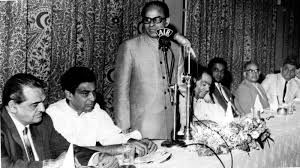IIT Hyderabad, India Post and NRSC develop Digipin for digital geospatial address: Meet the team

India is stepping into the future of addressing with a bold innovation. DIGIPIN, a digital geospatial address system, has been developed by IIT Hyderabad, India Post, and ISRO’s National Remote Sensing Centre (NRSC). This breakthrough system replaces traditional PIN codes with precise, human-readable digital addresses—reaching every corner of the country.
But who are the people behind this major innovation? Let’s meet the team that brought DIGIPIN to life.
What is DIGIPIN?
DIGIPIN is short for Digital PIN Code. It assigns a unique, 10-character alphanumeric code to every 3.8×3.8-meter square in India. This code allows anyone to find or share an exact location, even in remote areas without proper addresses.
Unlike older address systems, DIGIPIN is:
- Accurate to within a few meters
- Offline-compatible, so it works without internet
- Open-source, allowing others to build on it
- Privacy-friendly, since it doesn’t store personal data
Thanks to these features, DIGIPIN is ideal for postal delivery, emergency services, banking, and digital governance.
The Team Behind DIGIPIN
Prof. Soumya Jana – Leading the Vision
Prof. Soumya Jana, from the Department of Electrical Engineering at IIT Hyderabad, led the project. He guided the system’s architecture, ensuring that it could scale across India. He also focused on keeping the system fast, lightweight, and user-friendly.
Dr. Lakshmi Prasad Natarajan – Making It Work Offline
Dr. Lakshmi Prasad Natarajan, also from Electrical Engineering, ensured that DIGIPIN would function even without internet. This is crucial in rural areas, where connectivity is unreliable. His offline logic helped widen DIGIPIN’s reach.
Dr. Shashank Vatedka – Connecting Research to Reality
Dr. Shashank Vatedka led the integration of the DIGIPIN system with real-world applications. He worked closely with national partners and helped implement the codebase and user tools. His efforts brought academic research into the hands of government agencies and developers.
Tarandeep Singh – Young Talent in Action
Tarandeep Singh, a former M.Tech student in AI at IIT Hyderabad, was a core contributor. He worked on the algorithms that turn coordinates into DIGIPIN codes and helped build the early prototype. His work made the tool both efficient and accessible.
National Support: India Post and NRSC
This project wasn’t just a university initiative. Two of India’s major institutions helped bring DIGIPIN to life.
India Post – National Reach and Real-World Testing
India Post brought its experience in delivery and logistics. With post offices in nearly every village, they understood the challenges of traditional address systems. Their support helped the team create a system that solves real delivery issues.
NRSC – Geospatial Power from ISRO
The National Remote Sensing Centre (NRSC), part of ISRO, provided technical expertise in mapping. They helped the team divide India into tiny, accurate grid sections. Thanks to NRSC, each DIGIPIN is tied precisely to a real-world location.
How DIGIPIN Works
DIGIPIN divides the map of India into small grid squares. Each square is about the size of a small room. Every square gets a 10-character code, based on its exact location.
Here’s how it works:
- Encode: You enter latitude and longitude, and the system generates a unique DIGIPIN.
- Decode: You enter a DIGIPIN, and it returns the exact coordinates.
- Use cases: You can use DIGIPIN in e-commerce, emergency response, welfare delivery, and more.
It works even without a network, making it perfect for rural India.
Why DIGIPIN Matters
DIGIPIN does more than just pinpoint locations. It solves several real-life problems:
✅ Improves Deliveries: Packages reach the correct address, even in informal settlements.
✅ Enables Emergency Services: Ambulances or police can reach remote locations faster.
✅ Supports Government Programs: Welfare and aid can reach people without a fixed home address.
✅ Helps Urban Planning: Cities can track infrastructure, utilities, and traffic using exact locations.
✅ Boosts Digital Inclusion: Even people without formal homes can now have a digital address.
In short, DIGIPIN gives everyone a place on the map—literally and digitally.
Open-Source and Transparent
DIGIPIN’s codebase is open-source and available on GitHub. Built on Node.js, it includes APIs that developers and governments can use in their apps. This allows DIGIPIN to grow with community support.
Because it’s open-source, DIGIPIN also encourages transparency, public trust, and future innovation.
The Future of Addresses in India
DIGIPIN is not just a tech experiment—it’s a step toward digital equality. The team is now working on:
- Smartphone apps for easy use
- API integration with postal and delivery systems
- Public awareness campaigns
- Adding more features, like landmarks or nearby services
With continued government backing and public support, DIGIPIN could become the standard way of sharing locations across India.
Conclusion
The DIGIPIN team—Prof. Soumya Jana, Dr. Lakshmi Prasad Natarajan, Dr. Shashank Vatedka, and Tarandeep Singh—have built something remarkable. Together with India Post and NRSC, they have created a geospatial address system that is modern, inclusive, and made for India.
In a country with vast diversity and growing digital needs, DIGIPIN is more than a tool. It’s a symbol of innovation with a purpose. By giving every location a code, the system promises to bring more people into the digital fold—whether they live in cities, villages, or the spaces in between.





